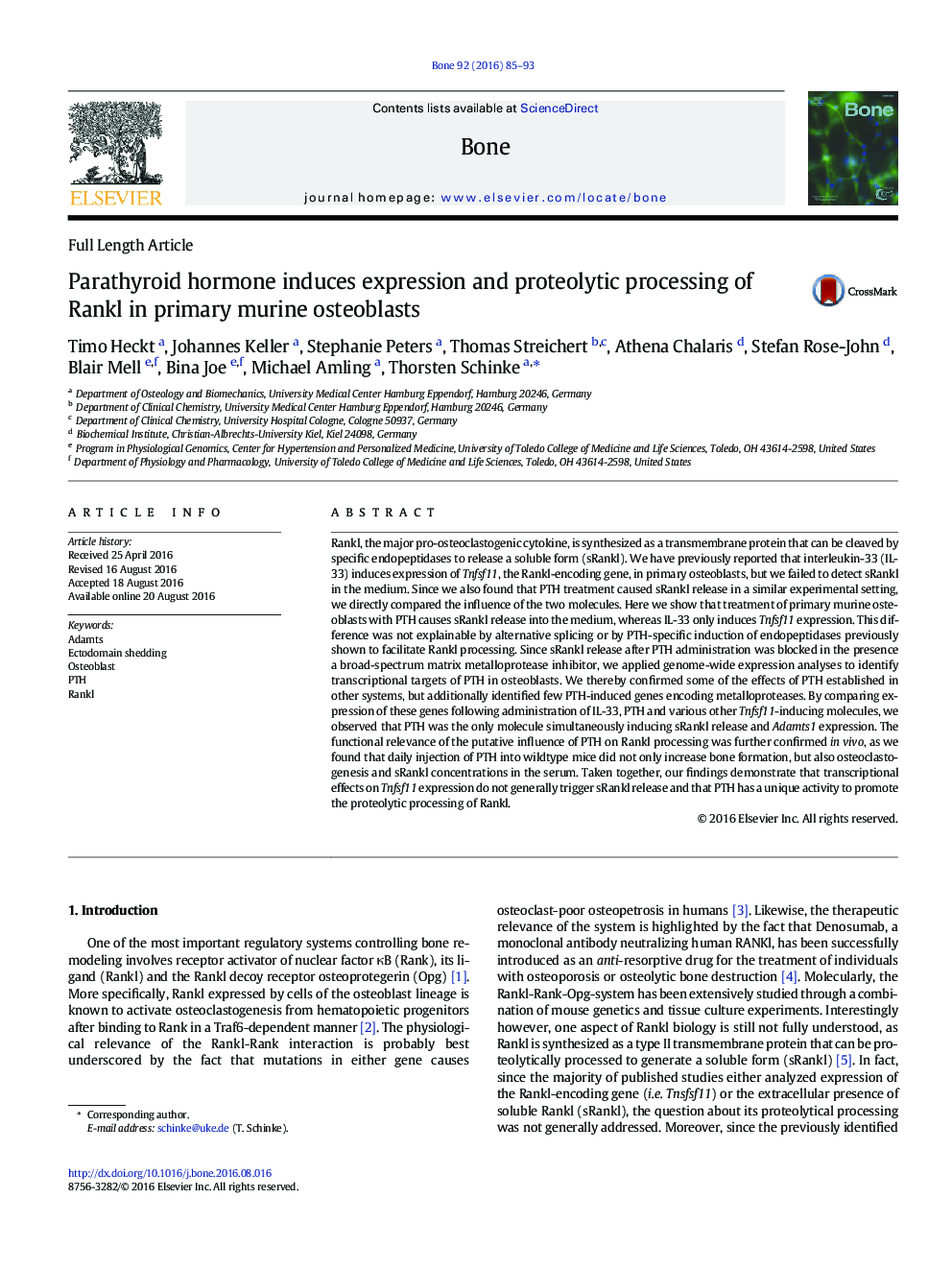| Article ID | Journal | Published Year | Pages | File Type |
|---|---|---|---|---|
| 5888760 | Bone | 2016 | 9 Pages |
â¢Treatment of murine osteoblasts with IL-33 and PTH differentially affects expression and proteolytic processing of Ranklâ¢The PTH-induced release of soluble Rankl is mediated by an undefined metalloproteaseâ¢The simultaneous induction of Rankl expression and proteolytic processing is a unique property of PTHâ¢PTH injection into wildtype mice leads to increased circulating Rankl levels, whereas Opg is unaffected
Rankl, the major pro-osteoclastogenic cytokine, is synthesized as a transmembrane protein that can be cleaved by specific endopeptidases to release a soluble form (sRankl). We have previously reported that interleukin-33 (IL-33) induces expression of Tnfsf11, the Rankl-encoding gene, in primary osteoblasts, but we failed to detect sRankl in the medium. Since we also found that PTH treatment caused sRankl release in a similar experimental setting, we directly compared the influence of the two molecules. Here we show that treatment of primary murine osteoblasts with PTH causes sRankl release into the medium, whereas IL-33 only induces Tnfsf11 expression. This difference was not explainable by alternative splicing or by PTH-specific induction of endopeptidases previously shown to facilitate Rankl processing. Since sRankl release after PTH administration was blocked in the presence a broad-spectrum matrix metalloprotease inhibitor, we applied genome-wide expression analyses to identify transcriptional targets of PTH in osteoblasts. We thereby confirmed some of the effects of PTH established in other systems, but additionally identified few PTH-induced genes encoding metalloproteases. By comparing expression of these genes following administration of IL-33, PTH and various other Tnfsf11-inducing molecules, we observed that PTH was the only molecule simultaneously inducing sRankl release and Adamts1 expression. The functional relevance of the putative influence of PTH on Rankl processing was further confirmed in vivo, as we found that daily injection of PTH into wildtype mice did not only increase bone formation, but also osteoclastogenesis and sRankl concentrations in the serum. Taken together, our findings demonstrate that transcriptional effects on Tnfsf11 expression do not generally trigger sRankl release and that PTH has a unique activity to promote the proteolytic processing of Rankl.
